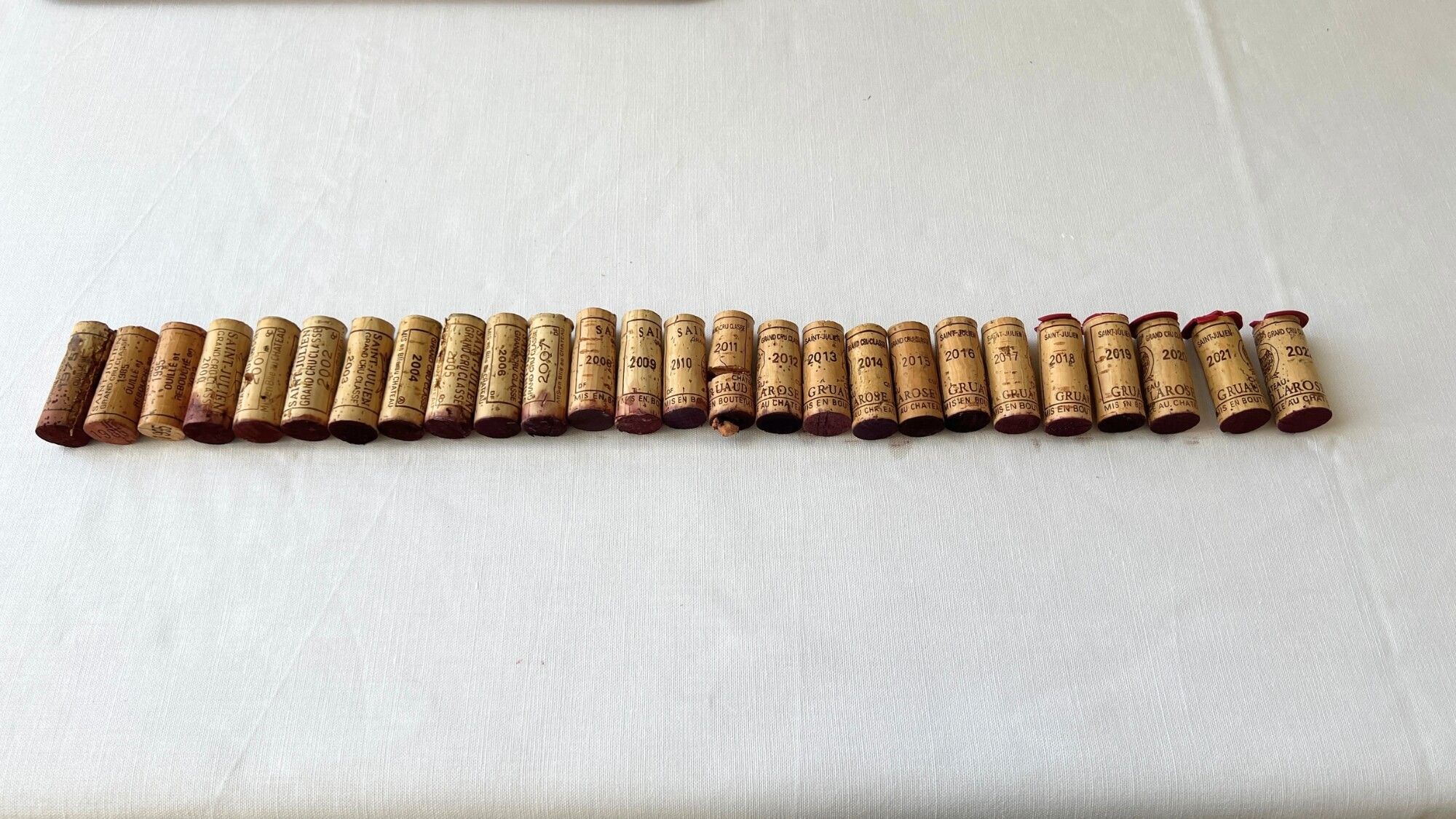AMA Vertical Tasting
Château Gruaud Larose
(1975-2022)
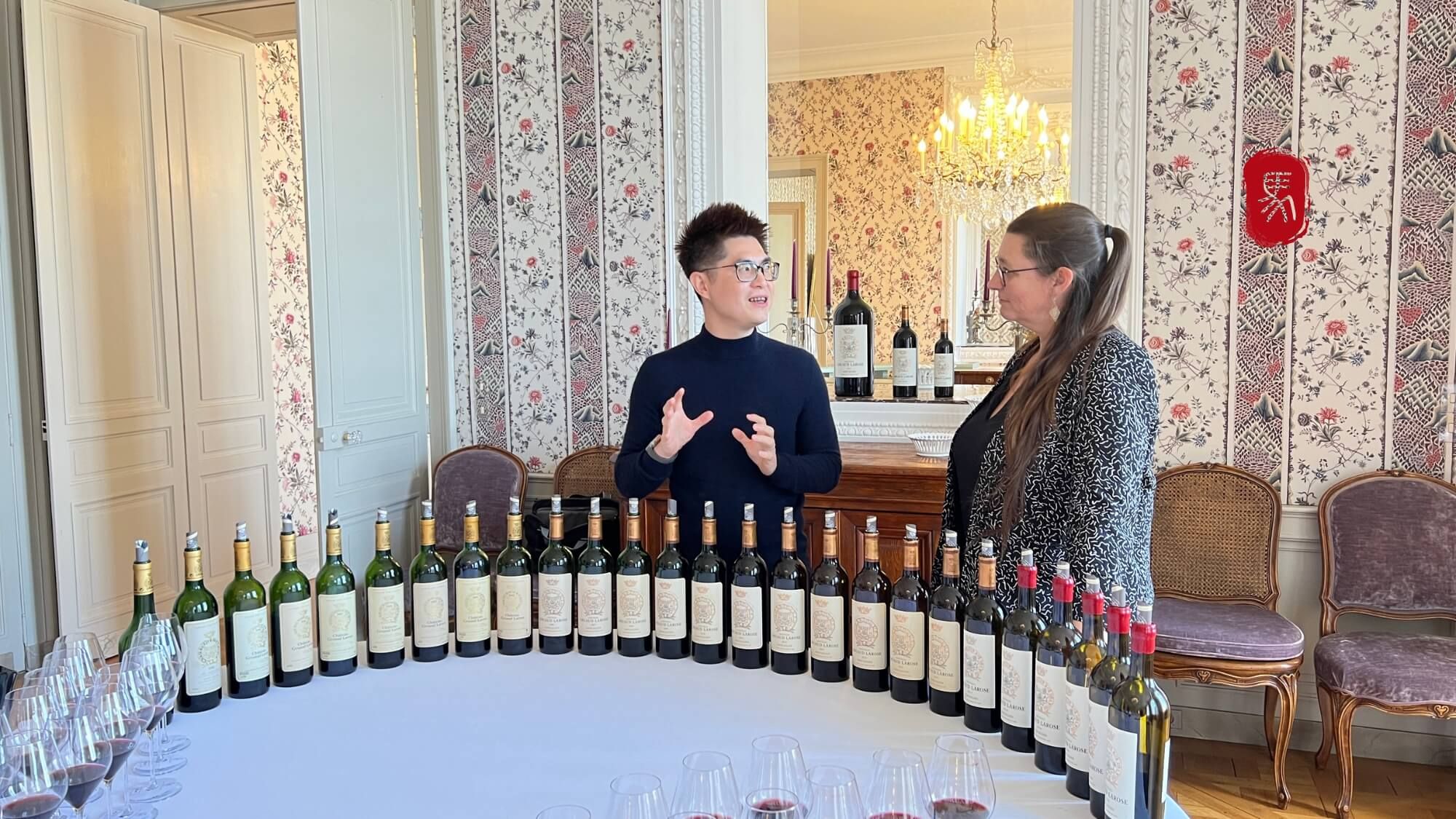
Between May and June, I organized more than a dozen vertical tastings. If I had to name the one I looked forward to the most, it would undoubtedly be the tasting of Château Gruaud Larose.
Two weeks before the event, I received an email from the estate: this would be a special vertical featuring over twenty vintages produced since Mr. Jean Merlaut took ownership of the château. The moment I read the news, a surge of excitement swept over me. I was so enthralled that in the days leading up to the tasting, I even dreamed of the lineup – truly a case of thinking about it day and night.
This time, the estate presented the complete range from 2000 to 2022, from legendary vintages to what the trade refers to as “small vintages,” without holding anything back. I found this openness and candor particularly admirable. On top of that, Matthieu asked if I would be interested in trying a few other vintages.
Though a bit hesitant, my curiosity won out, and I sheepishly chose three vintages ending in “5”: 1975, 1985, and 1995. To taste 26 vintages of Gruaud Larose in one sitting – what more needs to be said?
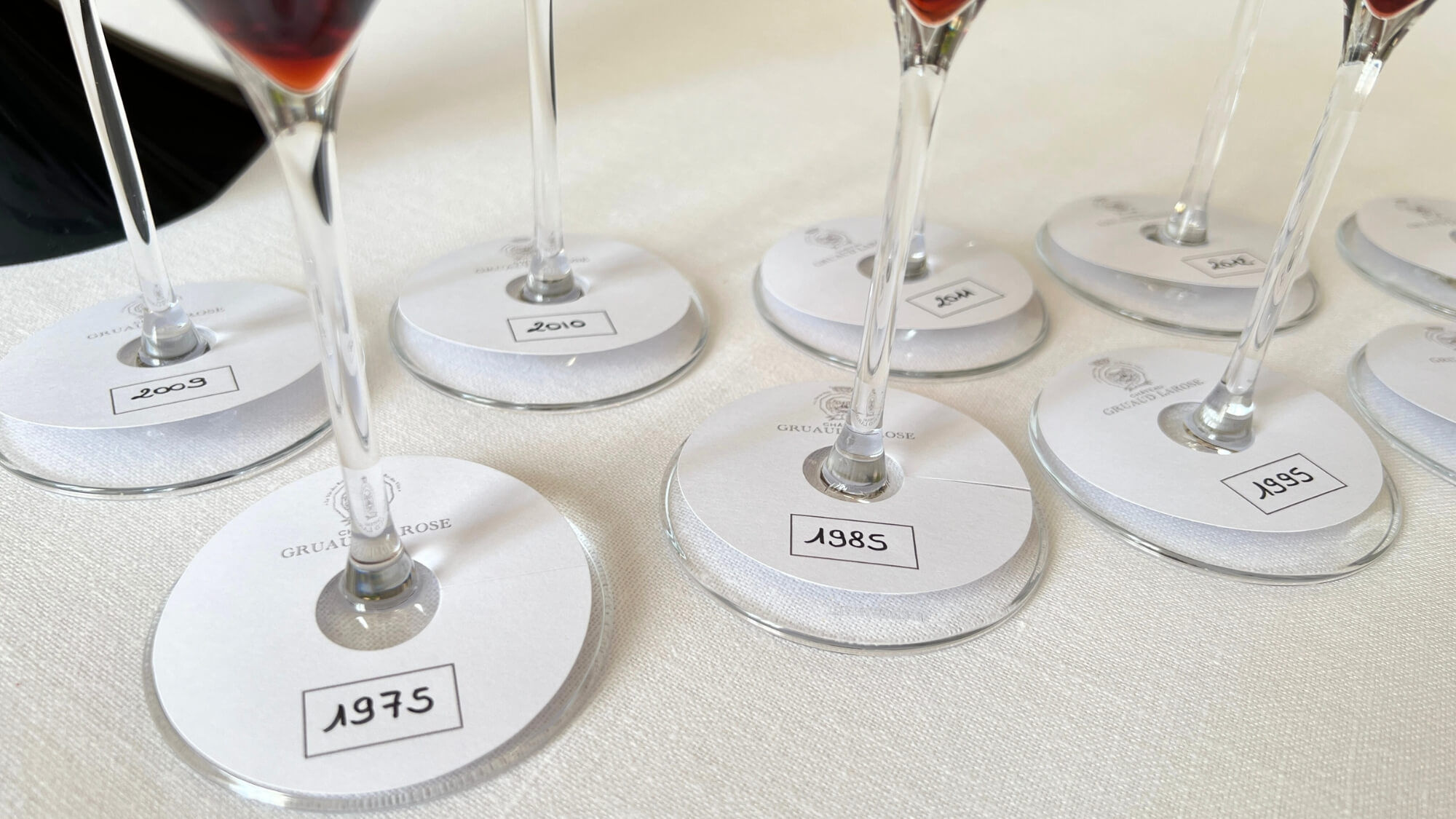
Part One:
Vertical Tasting Summary
Below is a chart I’ve compiled, summarizing the vintages that impressed me during this vertical tasting, as well as the stylistic evolution of Gruaud Larose in recent years. I believe you’ll find answers here for most vintages currently available on the market.
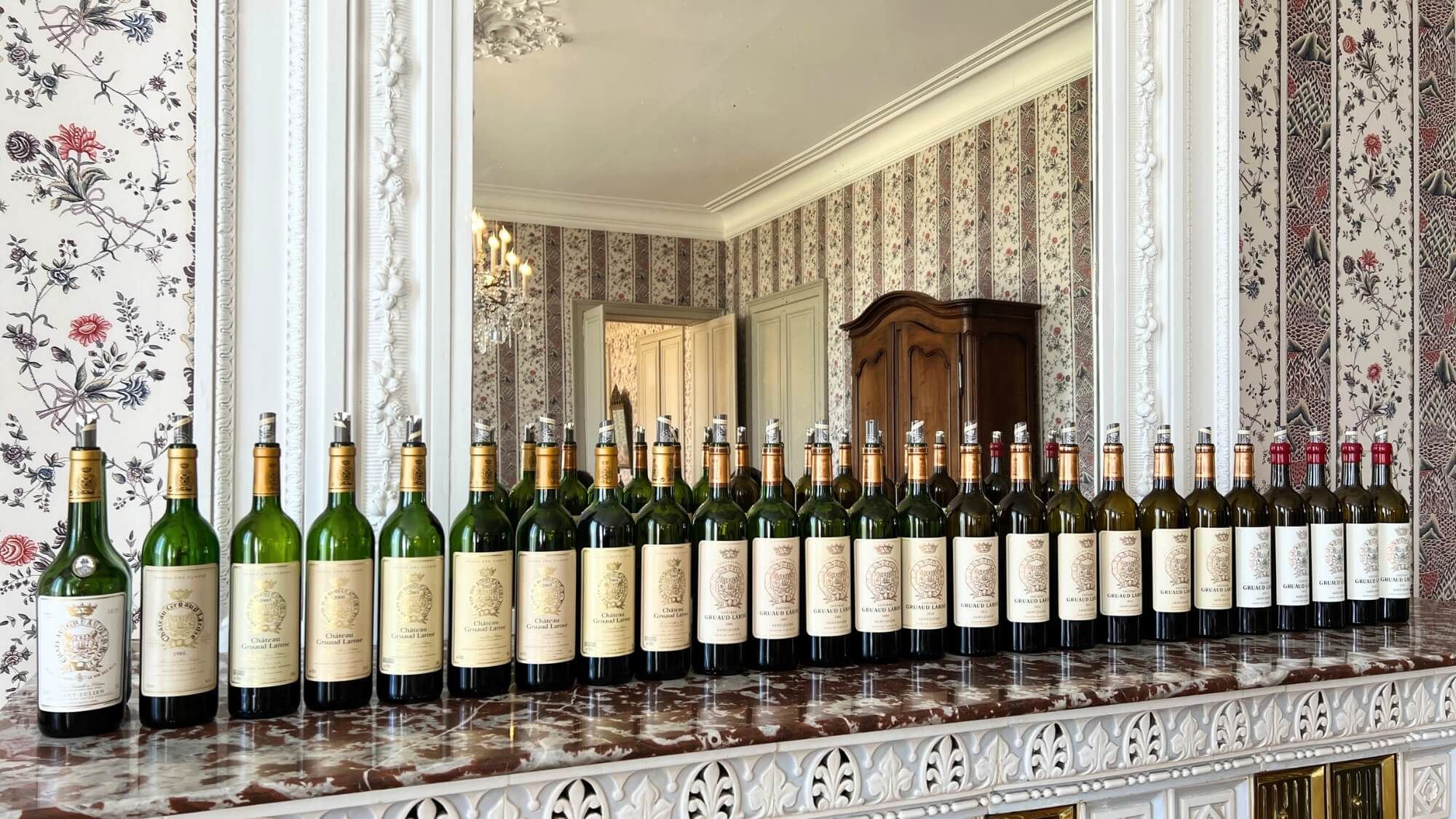
1995:
A classic example of traditional Bordeaux style, with a roasted character and extraction typical of the 1990s. I tasted it twice in just two weeks, and both bottles were strikingly youthful. Even more astonishing, despite the vintage’s scorching heat and severe drought, the alcohol level was held at 13.5%, while the acidity reached a remarkable 3.77 – significantly higher than in previous hot vintages.
2001:
A truly explosive vintage and one that is seriously underrated. From a personal perspective, I find it even more compelling than 2000. It doesn’t flaunt itself or rely on technical prowess, but instead moves forward like a rising tide, building momentum in waves and delivering a memorable crescendo.
2003:
Though commonly remembered as a hot vintage, its showing here at Gruaud Larose felt incomplete, lacking a certain something.
2004:
Another undervalued vintage. In a year prone to green notes, Gruaud Larose surprised me with a persistent truffle aroma that ran through the wine, adding depth and maturity to the body and overturning my preconceived notions of the vintage.
2005:
A highlight of the 2000s and a benchmark vintage that no Bordeaux lover should miss.
2010:
Still remarkably young, with even a hint of reduction. Tertiary aromas have yet to emerge, but the potential is immense. This is a wine that could easily age in the cellar for over 30 years.
2014:
A vintage of natural restraint and nobility, beautifully expressing the vitality of Cabernet Sauvignon. Given its attractive pricing, it deserves particular attention.
2015 & 2016:
Both vintages are widely recognized as excellent in Bordeaux. Across Saint-Julien as a whole, I personally prefer 2016. Yet at Gruaud Larose, I find myself drawn to the 2015. Its commanding presence and dynamic energy are simply irresistible.
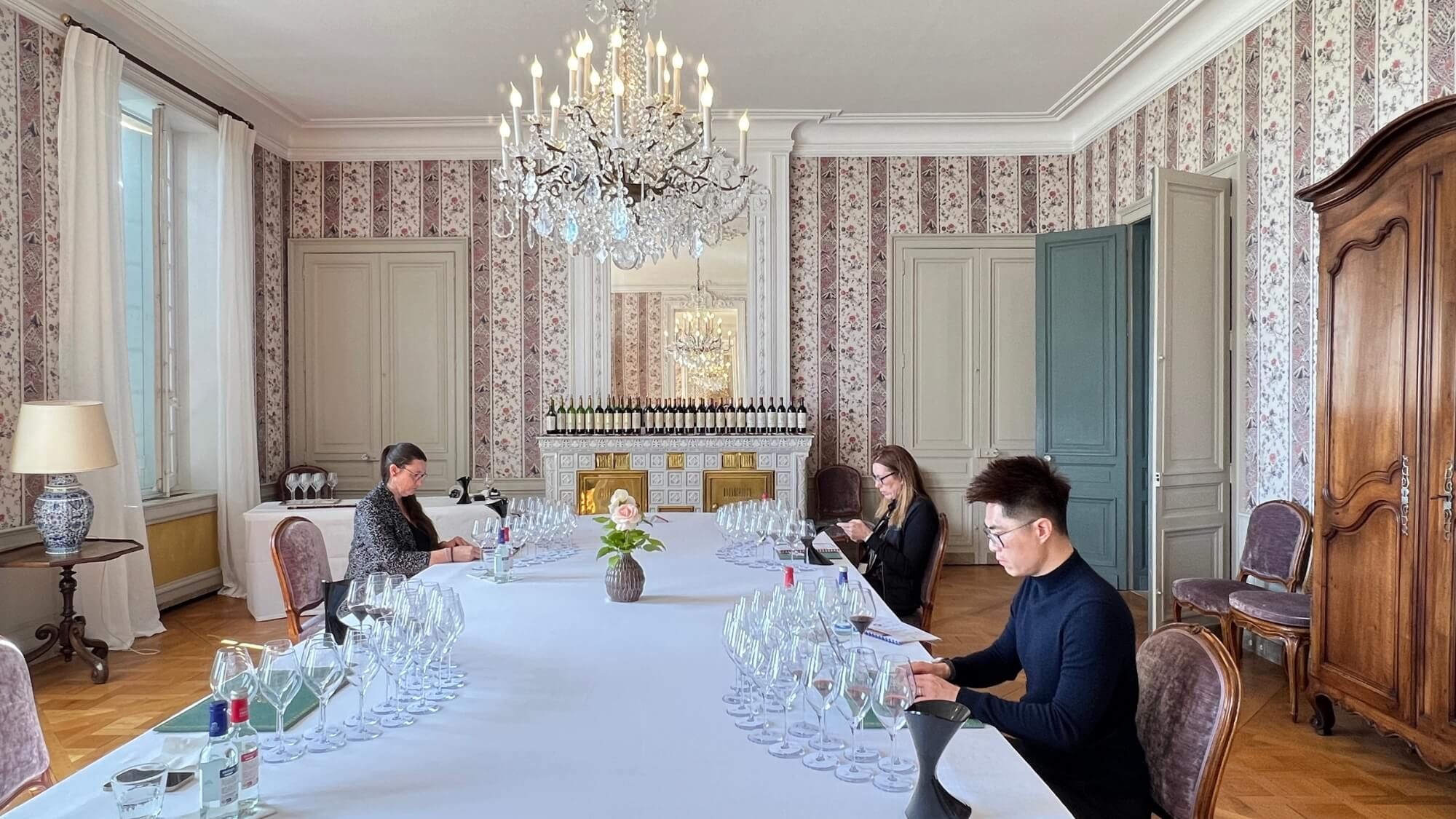
2017:
The first vintage under technical director Virginie Sallette. Despite the frost that year, the wine already reveals precision in its aromatics and a sense of flow in its texture.
2018:
A major turning point for Gruaud Larose, marking the beginning of a new journey. From this vintage on, the energy of Saint-Julien’s terroir began to be released with a gentle touch, like a spring breeze and soft rain, fresh and lively yet with clear aging potential.
2019:
The proportion of Cabernet Sauvignon crossed the 70% mark, gradually climbing to around 80% in the years to follow. Building on the vibrant fruitiness of 2018, this vintage introduces more violet aromas, adding further complexity and dimension.
Post-2020 vintages:
The tannins have become increasingly silky, at times almost “invisible.” The 2023 vintage is particularly striking, even the second wine, Sarget, is now fragrant, juicy, and delightfully aromatic. It’s a joyful surprise.
2022:
The most awe-inspiring vintage in recent years, representing the pinnacle of the château’s modern style across every dimension. It stands, in my mind, as Gruaud Larose’s contemporary masterpiece. Even more impressive is its technical balance: under extreme heat and drought, the alcohol level was kept at 13.5%, while acidity soared to a remarkable 3.77 – far surpassing previous hot vintages. It’s a testament to the estate’s extraordinary control in the face of global climate change.
One additional note: Gruaud Larose undergoes fascinating aromatic transformations with age. Unlike many Médoc estates that develop a “cold fireplace” character over time, Gruaud Larose blends the black truffle notes often found in aged Merlot from the Right Bank with the pine resin qualities of matured Cabernet Sauvignon. This is especially evident in vintages such as 2000, 2001, and even in 2004 and 2006 – vintages not especially known for their ripeness – where the black truffle character stands out vividly.
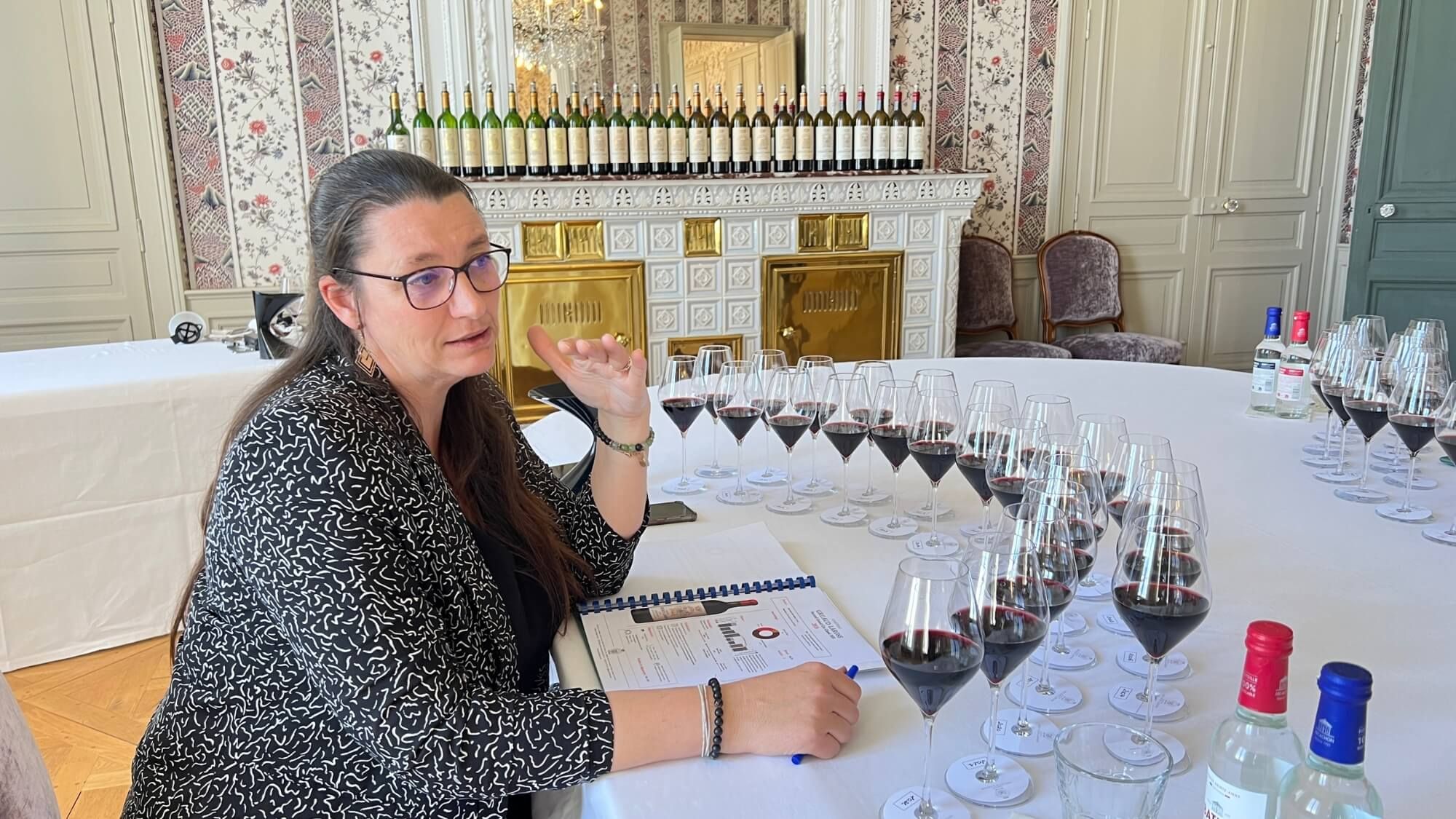
Part Two:
Where does the name “Château Gruaud Larose” come from?
Perhaps it’s the golden hue of the label, combined with the word “Larose”
(which means “the rose” in French), that has led wine lovers in China
to affectionately refer to it as “Golden Rose.”
But behind the name “Château Gruaud Larose” lies a series of stories worth telling.
Let’s travel back to the mid-18th century. At that time, a well-known monk from the Saint-Julien region, Father Gruaud, merged three separate vineyard plots into one estate known as “Fonbedeau,” which was also commonly referred to simply as “Gruaud.” Having no children of his own, he passed the estate to his nephew, Joseph-Stanislas de Larose. A nobleman and former knight, Larose added his own surname to the estate’s name, and thus “Château Gruaud Larose” was born.
Surprisingly, this golden name did not remain unbroken through history. After the French Revolution, the knight de Larose passed away in 1795 without a direct heir. The estate fell into a prolonged period of legal disputes over its inheritance, eventually being ordered for sale by the courts to settle the claims. It was subsequently acquired by three gentlemen: Balguerie, Sarget, and Verdonnet. Under their stewardship, Gruaud Larose was elevated to the rank of Second Growth in the 1855 Classification.
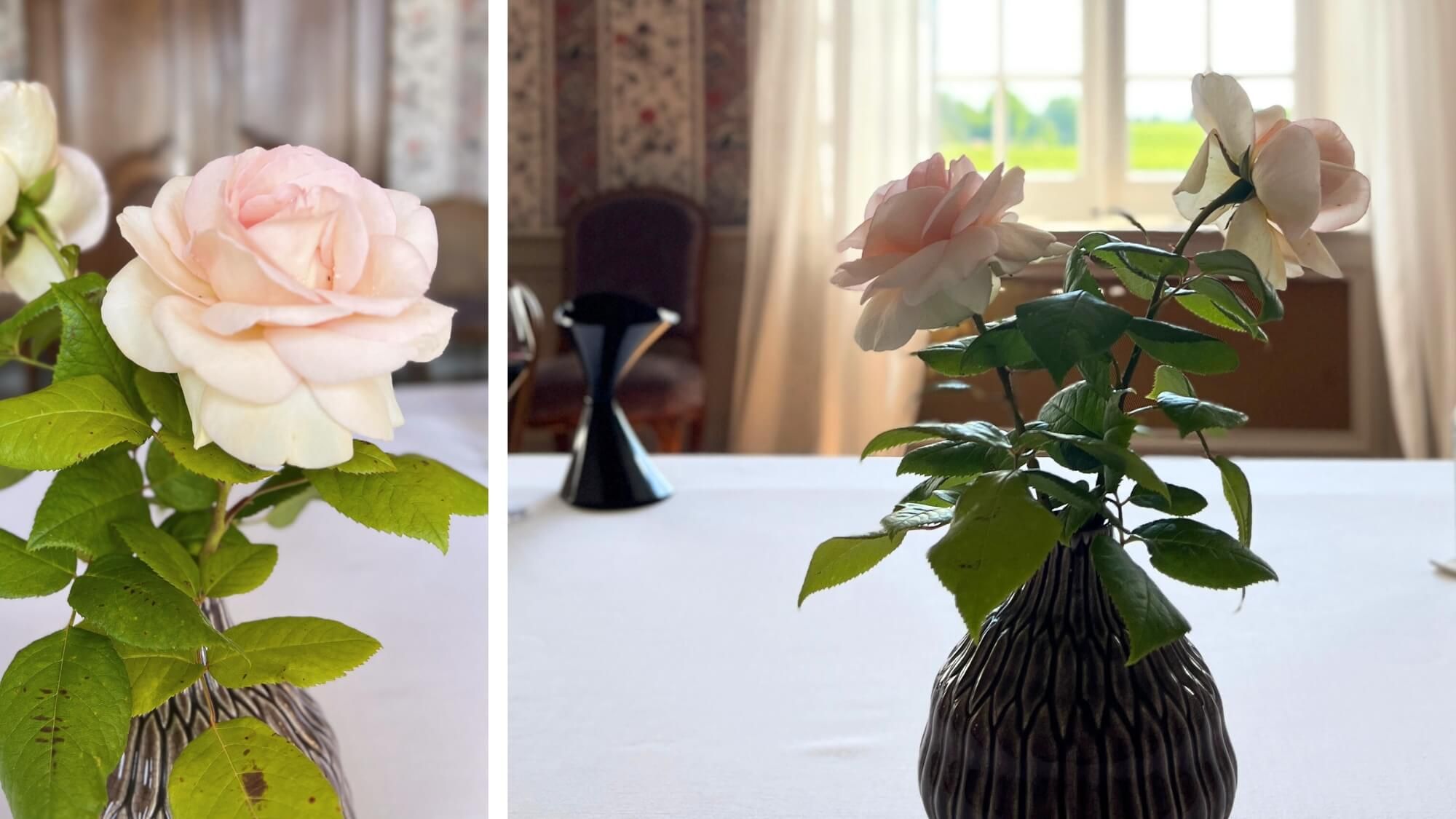
Unfortunately, by around 1865, the château once again faced division due to inheritance. It was split between the descendants of the Balguerie and Sarget families, giving rise to two separate estates: Gruaud Larose-Bethmann and Gruaud Larose-Sarget.
Had it not been for a fortunate encounter with the right person, the name “Château Gruaud Larose” might well have been lost to history.
In 1917, Désiré Cordier, then mayor of Saint-Julien Beychevelle, purchased the Sarget family’s shares near the end of World War I. Shortly before World War II, he acquired the remaining Bethmann shares.
In 1935, Cordier successfully reunited the estate. After years of separation, the 82-hectare vineyard was restored to its original form – a miraculous reunion. And for nearly a century since, it has remained whole, never again divided.

Part Three:
An Industrial Giant Once Held the estate
While researching, I was surprised to learn that in the second half of the 20th century, Château Gruaud Larose was once acquired by the banking consortium Indosuez, and later, in 1993, it was transferred to the renowned industrial heavyweight Alcatel-Alstom. Yes, the very same Alcatel-Alstom known for its deep involvement in high-speed rail, nuclear power, and urban tramway systems. Those familiar with its collaborations with China in high-speed rail and telecommunications will certainly recognize the name.
After acquiring the estate, Alcatel-Alstom spared no expense in renovating the winemaking facilities. When tasting the 1995 vintage, I could distinctly sense the qualitative leap achieved during that period: the wine showed remarkable concentration, a strong sense of structure, and a strikingly youthful expression.
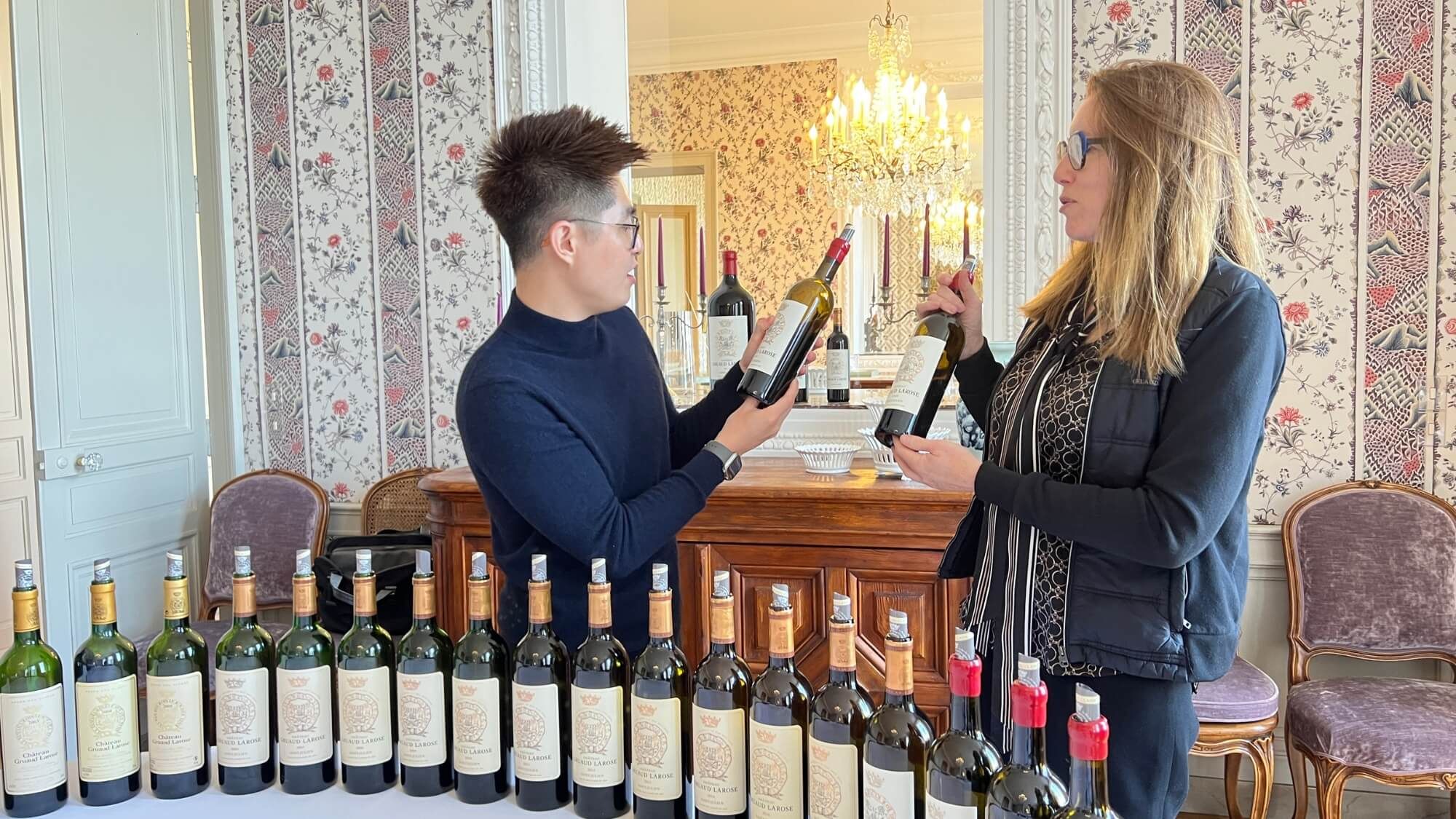
Part Four:
The True Transformation Began with Mr. Jean Merlaut
What truly breathed new life into Château Gruaud Larose was Mr. Jean Merlaut.
After acquiring the estate in 1997, he launched a sweeping reform that redefined the château’s future.
The first step was a thorough soil analysis, which led to the creation of a precise terroir map. The vineyard was then reorganized according to soil characteristics, with nearly 50 percent of the plots replanted. Even more impressively, Mr. Merlaut commissioned tailor-made wooden fermentation vats for each individual plot—a rare practice in Bordeaux at the time.
During this vertical tasting, I learned that most of Gruaud Larose’s vines are planted on what is known as Terrasse 3, rather than the more esteemed Terrasse 4, which can only be found on the eastern edge of the village.
Normally, the sand and gravel composition of Terrasse 3 is known for yielding plump and generous wines, but generally lacks the depth and structure associated with Terrasse 4. Yet at Gruaud Larose, these usual limitations seem to disappear.
Why is that?
The secret lies in a drainage canal to the south, called the Jalle du Nord. Thanks to its proximity to this canal, the soils beneath Terrasse 3 avoid becoming overly dry. In some areas, the subsoil even exhibits water retention properties similar to those of Terrasse 4. Additionally, some southern plots contain clay-limestone soils, which may not support the ripening of Cabernet Sauvignon but offer exceptional conditions for Merlot, especially in hot and dry vintages.
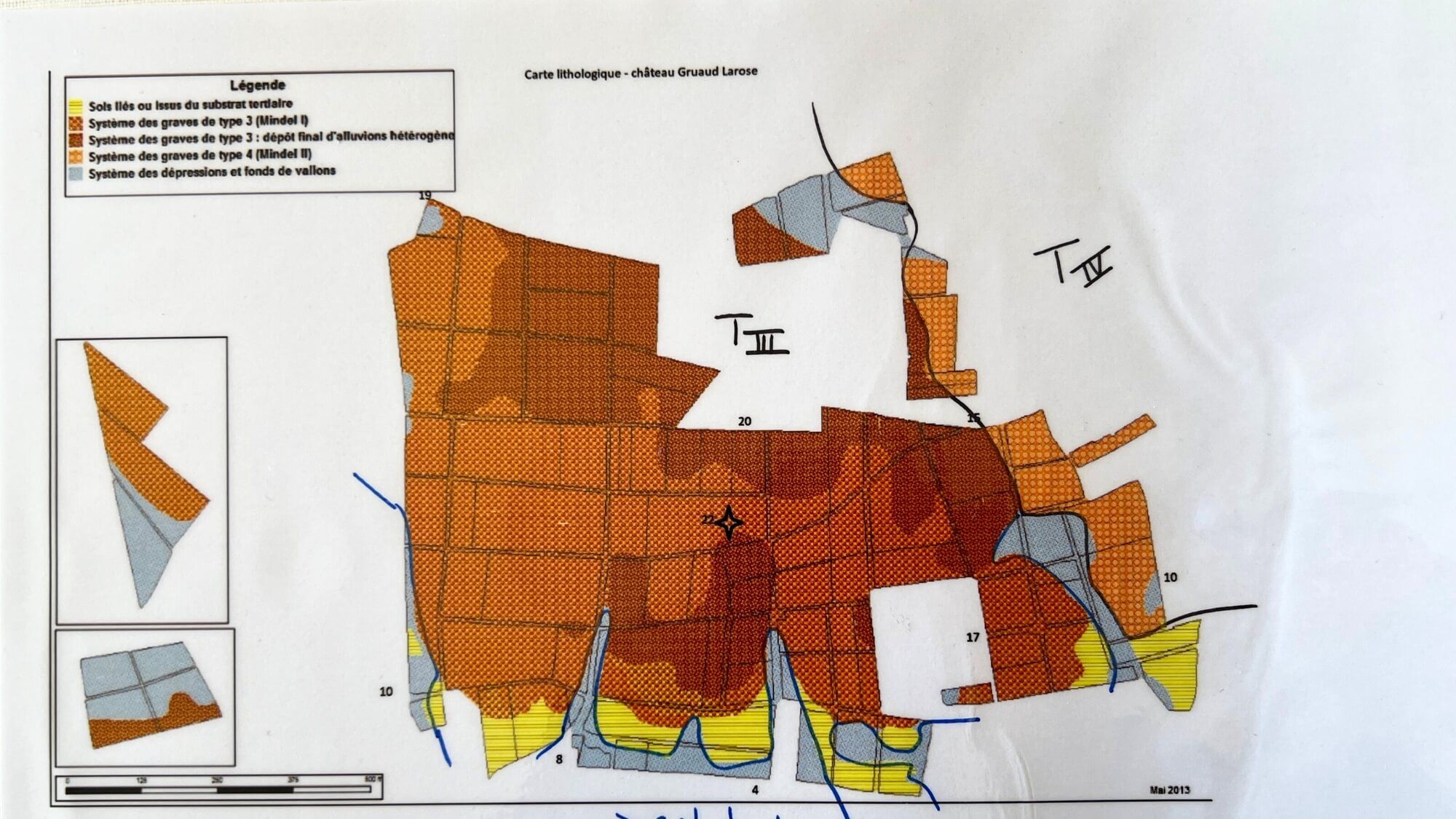
Part Five:
2018: The Start of a New Era
If I had to choose one vintage to mark the beginning of a new era for Château Gruaud Larose, it would be 2018, without hesitation.
That year, the estate began its transition to organic viticulture, and in the following years, it gradually embraced biodynamic practices.
I won’t go into the technical details here, but from a tasting perspective alone, a clear transformation began with the 2018 vintage. Gruaud Larose became brighter, more cheerful than ever. The fruit aromas opened up with exuberance, rich yet never ostentatious. The structure was compact but never heavy. Even the new oak influence felt nearly invisible. To describe the experience, one might say it was like standing in a gentle spring breeze. I believe anyone who has tasted the vintages from 2018 onward would clearly sense this stylistic shift.

If you’ve made it this far, you’re undoubtedly a true fan of AMA. I trust that through this article, you’ve come to appreciate how much Gruaud Larose has evolved in recent years.
For detailed tasting notes on all 26 vintages, please visit my website.
Until the next vertical, cheers!
